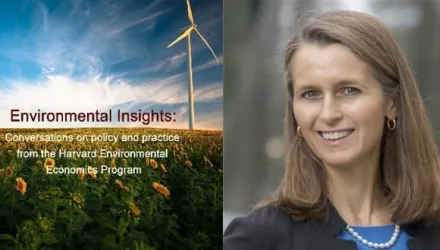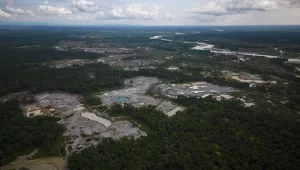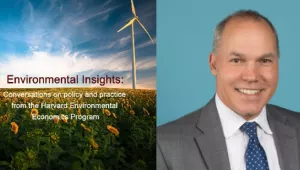China, the world’s largest emitter of greenhouse gases, has pledged to submit an updated “nationally determined contribution” (NDC) to the Paris Agreement before COP30 in Brazil in November. The new NDC will outline China’s climate targets through 2035.
Fan Dai, Senior Fellow with the Belfer Center’s Environment and Natural Resources Program and Science, Technology, and Public Policy Program, recently returned from China, where she met with some of the academics and policymakers shaping China’s next NDC. In this interview, she shares her insights on China’s climate action to date, how its leaders are thinking about an updated NDC, and the country’s remaining decarbonization hurdles.
This interview was edited for clarity and length.
Before we get into China’s next NDC, what are your perceptions of China’s current NDC? How successful has China been in meeting its targets?
Fan Dai: That’s a great place to start. Knowing where China is with its current NDC is important for us to be able to project its upcoming targets. The current NDC, which was submitted 4 years ago, in 2021, includes overarching carbon emission mitigation targets, such as peaking carbon emissions before 2030. Carbon neutrality is sort of vaguely mentioned as a target for 2060. Other important targets are reducing China’s carbon intensity - that is, carbon emissions per unit of GDP - 65% from 2005 levels and increasing its share of non-fossil energy in its primary energy consumption to 25%.
On these last two targets, I would say that China is making decent progress according to the numbers they reported in 2023. Non-fossil fuel energy, which includes nuclear and hydropower, accounted for around 21% of total primary energy consumption. China has already reduced its carbon intensity 55% from 2005 levels.
Now, if you look at the trajectory of China’s absolute emissions, that is more complicated. China’s total emissions continue to rise, partially due to the post-pandemic bounceback of economic activity. But I would also point to the expansion of coal power during that period of time.
I’m confident that China is on a path to achieve carbon emission peaking before 2030. The real question, in my mind, is how soon will we see that peak? Are we already seeing the plateau? Or will we see steady growth right up until 2030 and then a decline from there?
Based on my own observations, I think most parts of China are on track to peak emissions at or ahead of schedule. But certain provinces and industries are resistant to mitigation policies. These are places where new coal power plants are still being built, that are still struggling with the energy transition. These places may not achieve peaking until after 2030. So while I think China, as a country, will meet its 2030 peaking target, it’s not going to be uniform across all provinces.
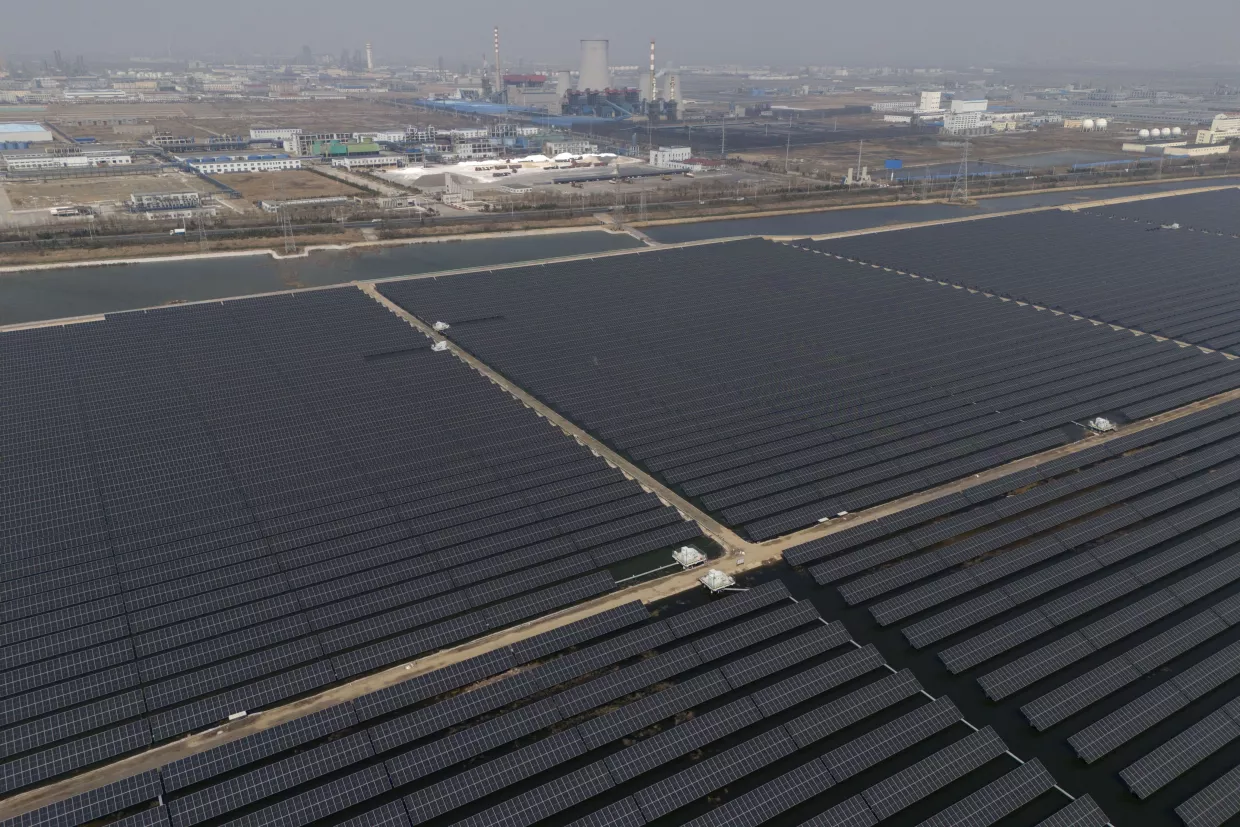
How does China’s climate policy compare to other major emitters?
Fan Dai: I’ve been studying climate policy in the United States and China for a long time, and one of the distinguishing features of China’s climate policy has been its consistency. Especially at the national level, China is taking a much more consistent and holistic approach than many other countries. Its climate agenda has a clear timeline, with both short-term and long-term goals.
The challenge for China lies in balancing its economic growth and climate goals. In some cases, that’s not an either-or question. We may see a decoupling of China’s emissions trajectory and its population growth and economic growth. To keep the economy growing while cutting emissions takes not only time but also a lot of investment. And that investment is helped by a stable policy landscape.
Whereas, if you look at the current situation in the United States, there is so much federal pushback against existing climate targets and even state climate policies. It’s a huge challenge to move any climate policies forward. So from that point of view, China is doing a better job keeping its word and meeting its climate targets.
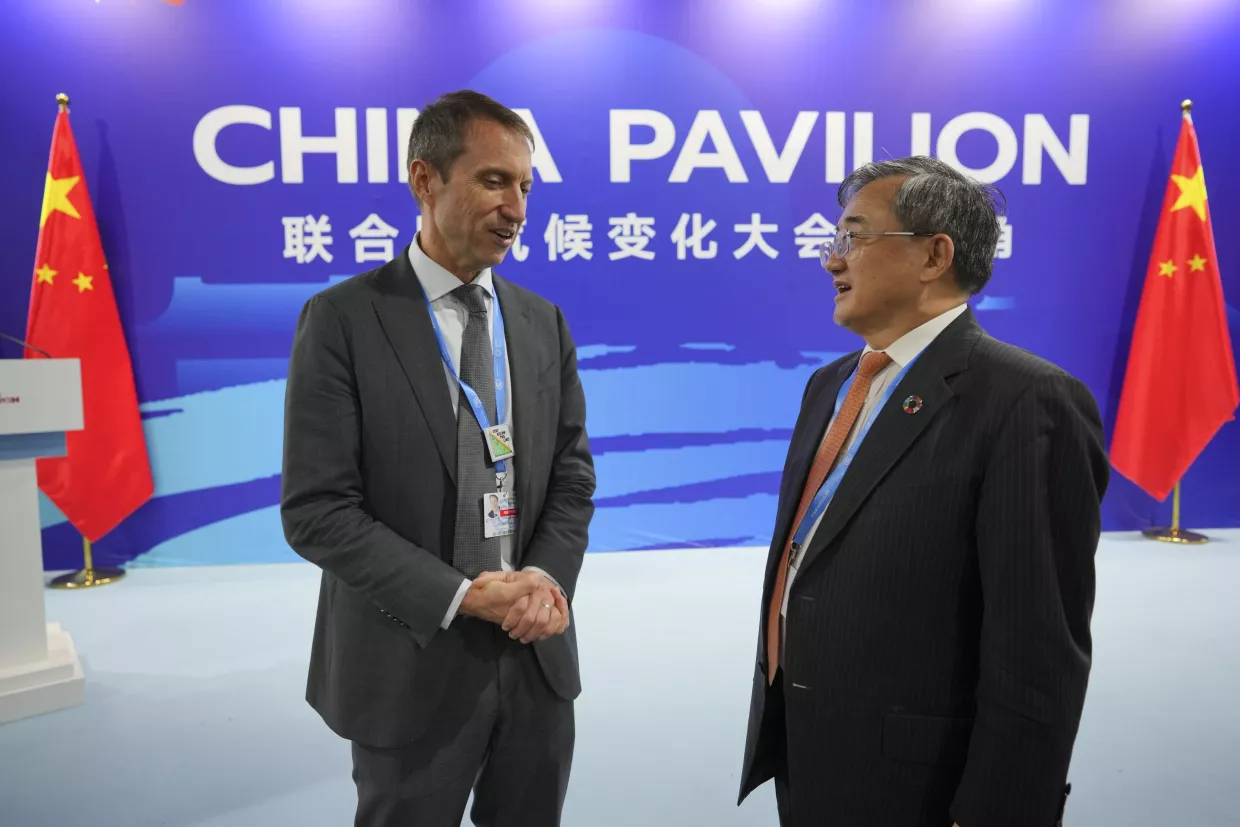
Turning to your recent trip, how are Chinese policymakers thinking about updating China’s NDC? Where do you think we’ll see the biggest changes?
Fan Dai: During my recent trip, I had the chance to discuss topics related to China’s NDC with Chinese policymakers and scholars, and a few things stood out to me.
First, I was struck by the determination among policymakers to not only enhance the current targets, but to stick closely to a set timeline. China's President Xi Jinping said in April that China will announce its 2035 NDC covering all economic sectors and all greenhouse gases before the United Nations Climate Change Conference in Belém.
Second, many people I talked to spoke about the need to align the next NDC with China’s 15th Five-Year Plan for 2026 to 2030, which coincides with the 2030 peaking target. There’s a clear interest among policymakers to match up sectoral targets, especially in the power, transportation, heavy industry, and transportation sectors. In the end, the targets may not be exactly the same, but I think the alignment efforts will ensure more accountability in terms of what ultimately ends up in the NDC.
There’s definitely some hesitation around overpromising. At the moment, the United States and other countries around the world are not pushing aggressively to meet their climate targets. So I think Chinese policymakers are being strategically cautious about what they put in the revised NDC due to concerns factoring in economic growth and geopolitical uncertainties. I’m tentatively optimistic about the actual targets China will settle on, with reservation about the United States and other major emitters’ underperformance and lack of political determination.
Finally, I’m hoping for a more concrete methane emission reduction target in the upcoming NDC. China has made good progress on its national methane reduction roadmap, and I talked to a few subnational policymakers who are working on their own methane emission reduction plans, particularly for the energy and waste sectors. China faces the same challenges as the United States in mitigating agricultural methane emissions, but in other areas I think they are ahead.
Looking forward, what are the biggest climate policy challenges for China until 2030? Which developments, if any, make you hopeful?
Fan Dai: First and foremost, China’s economy largely still depends on coal. Decarbonizing the heavy industries, such as cement, steel, and the power sector, is going to be a big challenge, and it’s going to take time.
I would also emphasize what I would call implementation gaps between the national and subnational levels, and also between sectors. China has a top-down political system. Targets are set at the national level, and then implementation is delegated to subnational or sectoral actors. Some of those provinces and sectors are already on track to reduce their emissions, but others are not, so decarbonization is going to be uneven, and that will make it hard to predict emissions reductions. To enforce targets for different sectors, China has relied on mandates and subsidies. Those subsidies, in particular, are becoming less and less. I think, as China scales up renewable energy and electric vehicles, it will need more market-oriented incentives for decarbonization, another thing that will take time to implement.
The last challenge I’ll mention is there’s a strong need for transparency in carbon emission data. I think that’s a big blind spot under the current NDC, and something that the new NDC could enhance. Uniform carbon accounting, as well as sectoral roadmaps, will be essential to measure progress in emissions reductions and to evaluate how different provinces and sectors are doing. It’s not a target, per se, but it would be a welcome and important improvement.
What makes me hopeful? As I previously mentioned, the consistency of China’s climate policy is one thing. Another source of optimism is the rapid growth of renewable energy in China, particularly its installed renewable capacity, which is well-documented. China’s renewable energy industry is leading the world. Its solar and wind targets were met well before 2030, and its electric vehicle industry is growing much faster than anticipated. I feel very positive about the scale of these industries and the speed of innovation that’s taking place.
I don’t think China is going to stop or even slow down. All of these things have happened despite geopolitical uncertainty, despite what’s happening in the United States. China is well-positioned to be a leader for climate action under the UNFCCC and other international bodies, as well as to set a good example to the developing world through its “South-South collaboration” on renewable energy investments and capacity building. So I don’t see China changing its overall course on climate.
Dai, Fan. “China’s Updated Climate Goals: Q&A with Senior Fellow Fan Dai.” Edited by Hanlon, Elizabeth. Belfer Center for Science and International Affairs, July 15, 2025





